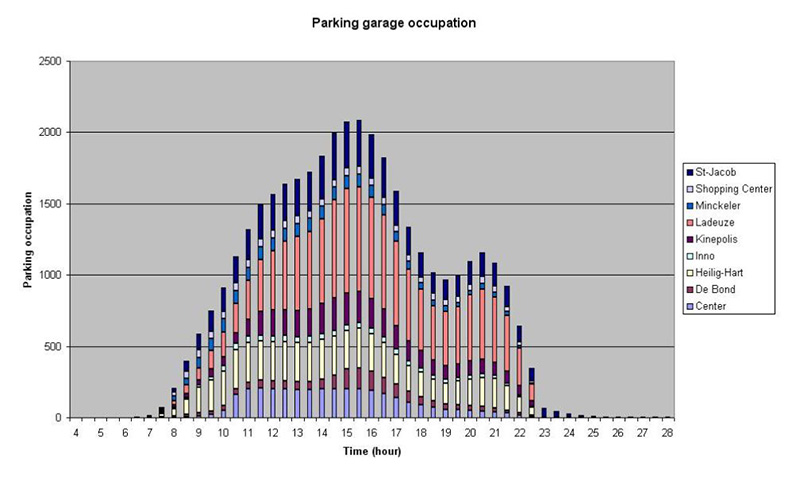SUSTAPARK
06.08
From 2007 to 2009
In the SUSTAPARK project, TML is developing an agent-based microsimulator to sustainably optimise parking policies in Belgian cities. The simulation, which models drivers' search behaviour, was applied to Leuven and included three case studies on the effects of a new parking garage, increased parking demand during the Christmas market, and the impact of car-free streets.
Transport demand management can help cities implement sustainable mobility policies. One of the most efficient ways to do this is through parking policy. However, Belgian cities lack tools to optimise the number of spaces, price, and duration of public parking in a sustainable way.
In the SUSTAPARK project, we are building such a simulation tool. It is conceived as an agent-based microsimulator, modelling drivers as a synthetic population. Their trips for work, shopping, going out, etc. are simulated, as well as their search for a parking space. The search behaviour is based on research that considers economic, cognitive, and situational factors when people search for a parking space.
The model was applied to the city of Leuven, for which three case studies were conducted:
Transport demand management can help cities implement sustainable mobility policies. One of the most efficient ways to do this is through parking policy. However, Belgian cities lack tools to optimise the number of spaces, price, and duration of public parking in a sustainable way.
In the SUSTAPARK project, we are building such a simulation tool. It is conceived as an agent-based microsimulator, modelling drivers as a synthetic population. Their trips for work, shopping, going out, etc. are simulated, as well as their search for a parking space. The search behaviour is based on research that considers economic, cognitive, and situational factors when people search for a parking space.
The model was applied to the city of Leuven, for which three case studies were conducted:
- The addition of a new large car park in the city centre, which led to a shift in the use of parking spaces.
- A higher parking demand because of the Christmas market, which led to an increase in search times and search distances.
- Making part of a city centre street car-free, which had no significant impact on parking behaviour.


